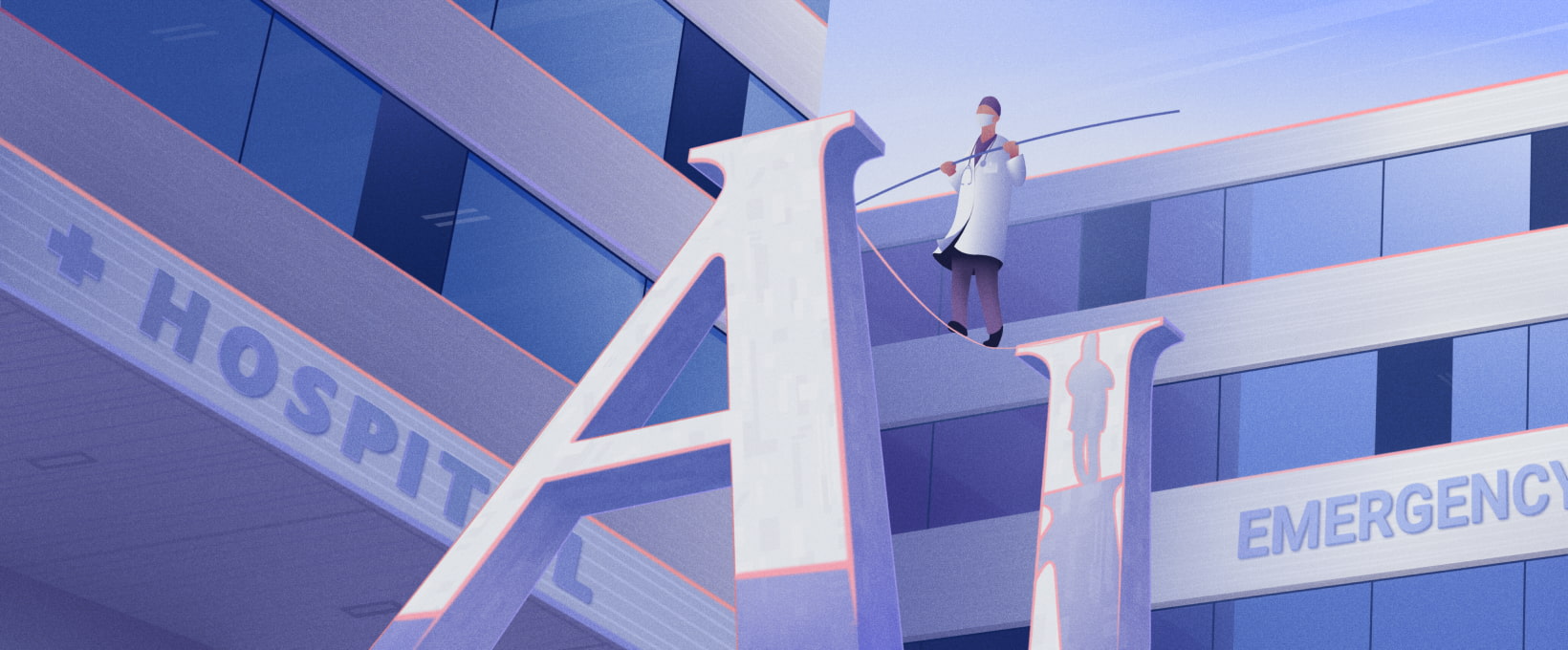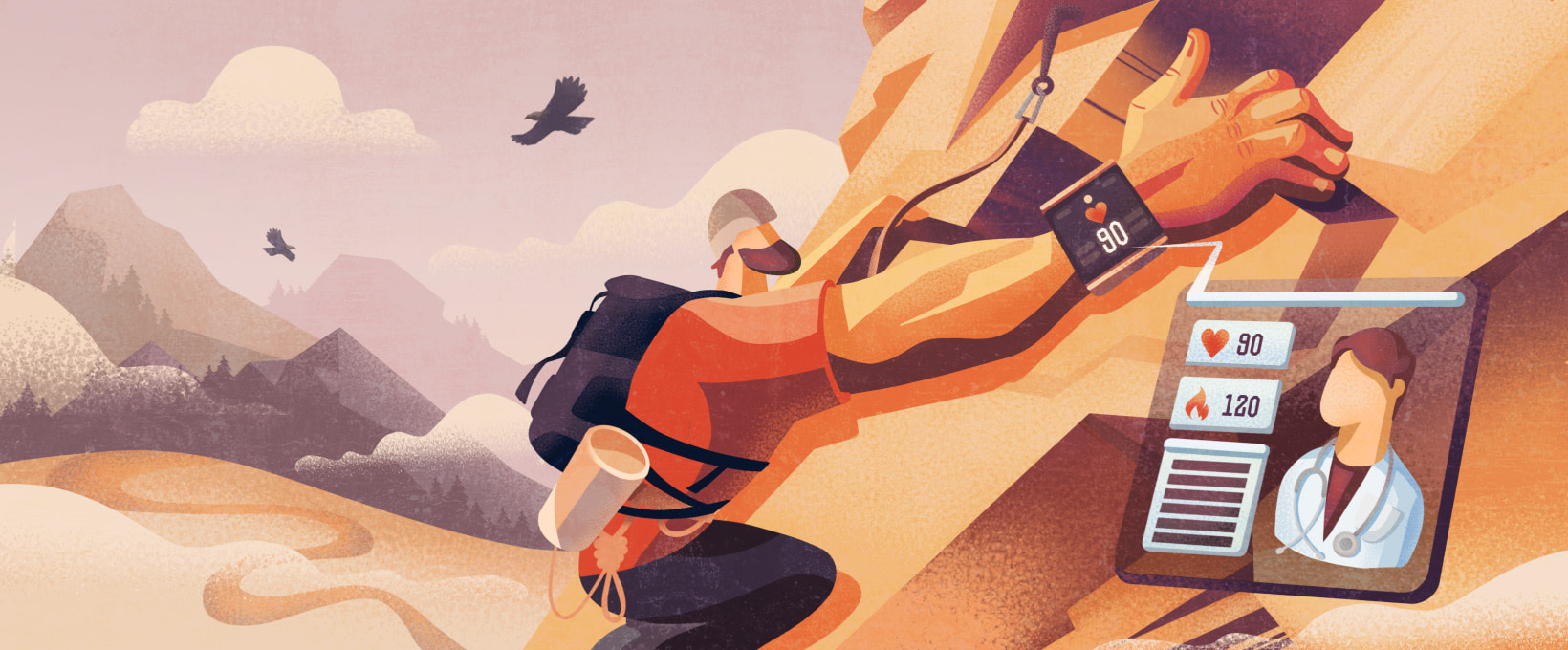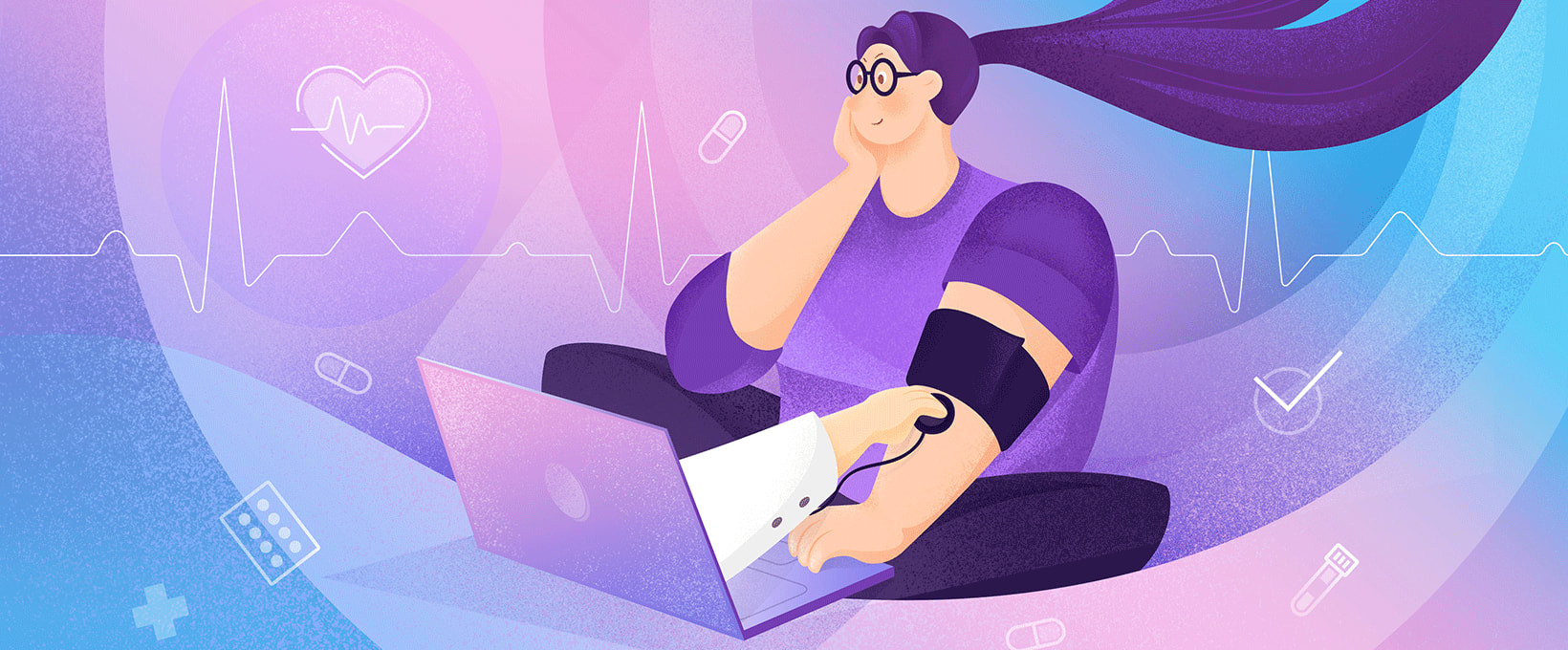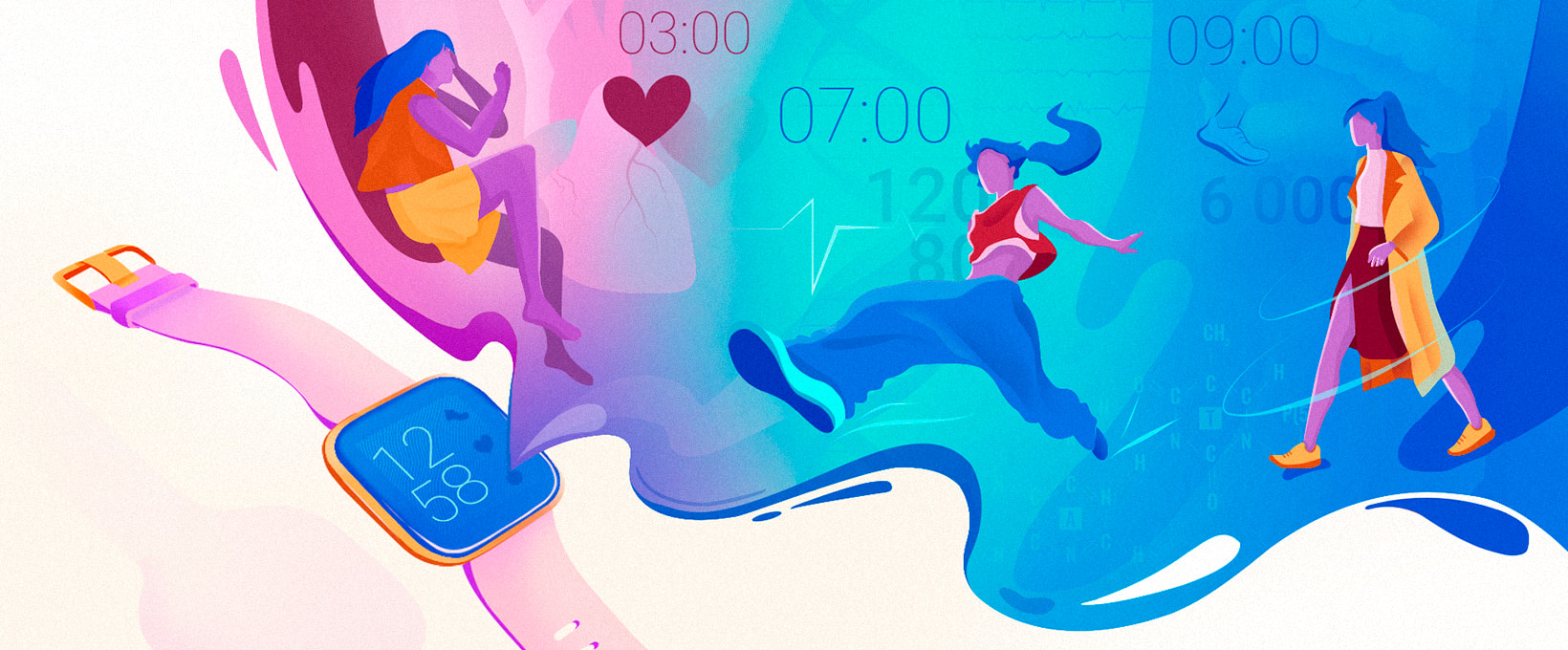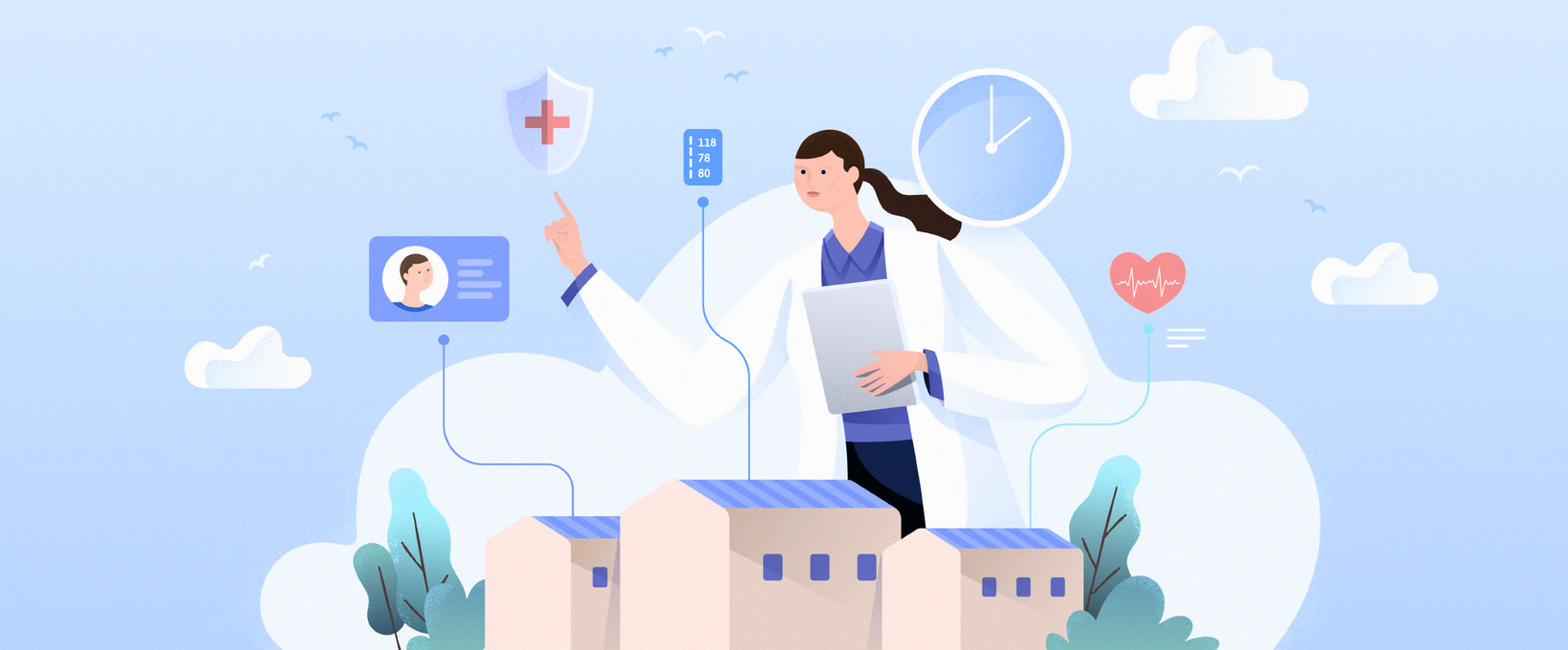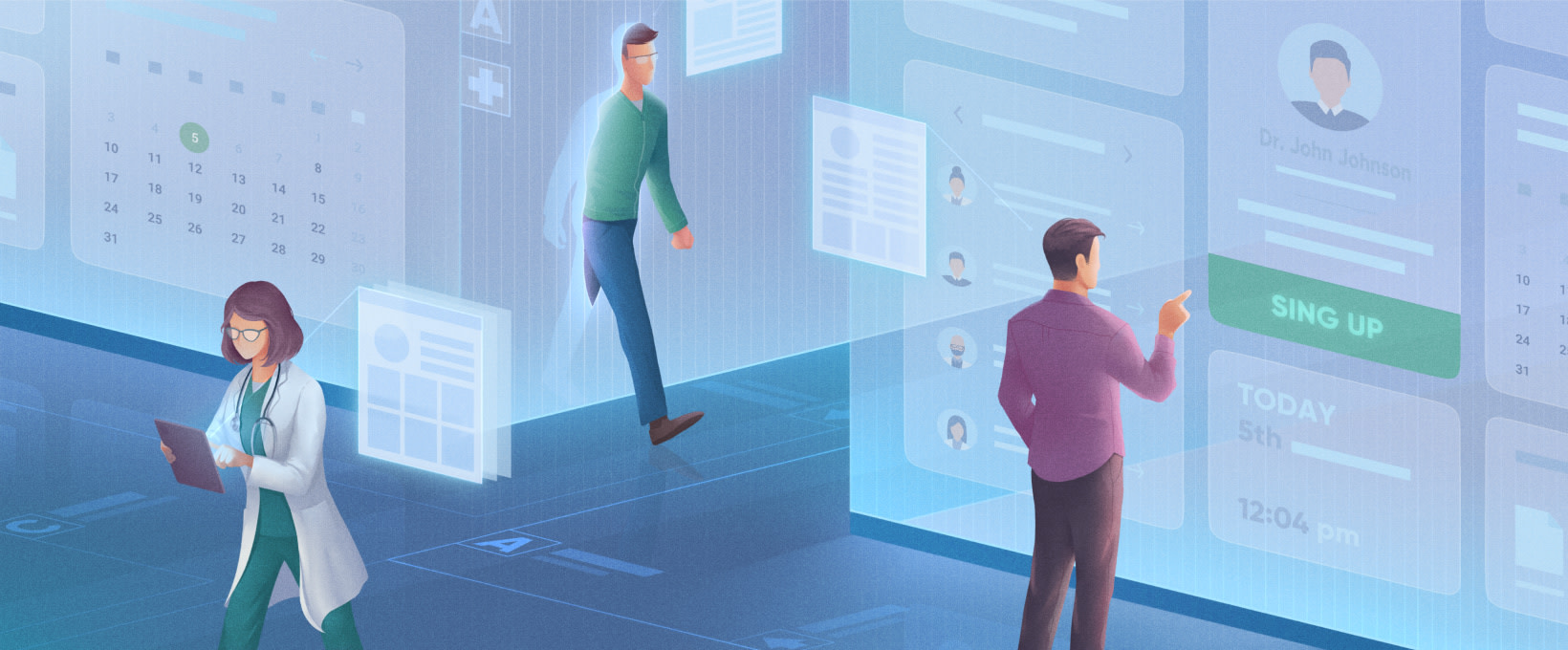- What is wearable technology in healthcare?
- Types of wearable technology in healthcare
- The benefits of wearable technology in healthcare
- Challenges of implementing medical wearables
- The future of wearable technology in the healthcare industry
- Conclusion
By definition, a wearable, in the context of wearable health technology, means a gadget that people are supposed to wear on their bodies. As an element of the IoT world, they have intelligent sensors connected to the Internet. In this capacity, they transmit data to external storage, log it, and even analyze it. These functionalities are invaluable when it comes to medicine. Constant monitoring of one’s health, smart alerts and timely notifications, as well as adherence to medications and procedures is what they promise. Needless to say, this market is growing. The global population is aging. The prevalence of chronic diseases is rising. The more elderly there are and the more chronic conditions there are, the more assistance people need.
Predictably, demand for medical wearables is expanding. As of 2021, the size of this market was $20.1 billion. In 2026, it is expected to reach $83.9 billion. What do these figures mean when it comes to ordinary users? In 2020, in the US alone, 30% of adults (i.e. 258.3 million people) were using medical devices. Almost half of them use them on a daily basis. So this is a matter of great importance. Let’s dive deeper into the world of wearable medical devices. As you will see below, this relatively new sector is already revolutionizing the way we see healthcare.
What is wearable technology in healthcare?
According to Deloitte, this year, 320 million consumer health and wellness wearable devices are expected to ship globally. Around 2024, that figure is expected to hit roughly 440 million units. However, what is a medical wearable? According to TechTarget, wearable devices in healthcare are any sort of ‘electronic device designed to be worn on the user's body,’ in any possible form, ranging from specifically crafted professional medical gadgets to watches and jewelry. Indeed, there are many types of them. Below, we will provide a brief overview.
Types of wearable technology in healthcare
On a ‘simple-to-complex’ basis, wearable devices in healthcare can be divided into the following categories:
- Fitness trackers, which are the simplest way of measuring heart rates and regular sorts of physical activities, such as walking, jogging, and exercising;
- Smart watches, which are more complex, offer such advanced functionalities as sleep tracking, blood oxygen saturation monitoring, heartbeat alerts, reminders, etc.;
- Wearable ECG devices. ECG stands for ‘electrocardiogram.’ While some smartwatches do support ECG functionality, there are also specifically designed devices. As such, they are capable of measuring heart activity, e.g. atrial fibrillation, and transferring the corresponding readings to medical professionals;
- Blood pressure monitoring devices, resembling smartwatches, that can measure not only blood pressure, but also distance walked and calories burned;
- Special biosensors, which are the most advanced type, can measure and send alerts about blood sugar, breathing, temperature, etc., depending on their purposes.

The benefits of wearable technology in healthcare
Usage of wearable devices in healthcare has an entire range of benefits. Precision and connectivity make it possible to propel medical efforts to a new level of efficiency. Among other things, both doctors and patients can enjoy:
- Better access to medical advice and remote care. As the IoT technologies advance, various devices can ensure real-time access to one’s condition and symptoms. On top of that, medical professionals are in the right position to analyze data and send recommendations;
- Greater compliance with prescriptions and adherence to treatment plans. Wearable health technology makes it possible to monitor patients’ symptoms and reactions in real-time, as well as whether they are following their doctors’ advice;
- Enhanced diagnostics. Wearables can assist with self-diagnostics and medical examinations. When tracking patients’ conditions over time, it is possible to get more valuable and reliable insights;
- Faster reaction times. If a human life is at stake, speed is everything. Having a proper wearable device at your disposal, will make it possible for patients to keep in touch with their doctors, while doctors can detect threats and abnormalities and make corresponding decisions.
Challenges of implementing medical wearables
All the aforementioned advantages notwithstanding, wearable health technology is not free from shortcomings. The following are the most important ones:
- Battery. Power management is of crucial importance if you want to keep patients connected. Unfortunately, most modern batteries cannot function for days at a time. To deal with this issue, you need to find a reliable software vendor capable of configuring workable and efficient sleep and energy-saving modes, so that a perfect balance can be struck between hardware and software.
- Security. By definition, medical data is both personal and sensitive. It must be protected by all the applicable safeguards in conformity with all applicable rules and laws. If you want to launch a new device or software product for that device, make sure to collaborate with GDRP- and HIPAA-certified software vendors.
- Small screens. As we have already stressed, the key property of wearable medical devices is that they are to be worn on the human body and used on the go. Hence, their size and screens are inevitably small. This means, your approach to UI/UX design needs to be careful. On the one hand, each screen has to be informative. On the other hand, it must also stay easily navigable and comprehensible, especially when elderly and mentally challenged patients are involved. The best way to handle this challenge is to collaborate with an experienced UI/UX company that masters all design requirements, such as Andersen.
The future of wearable technology in the healthcare industry
Technological changes are all around us. While what we can see in the domain of wearable technology in healthcare is already impressive, what we are about to see is truly breathtaking. In Andersen’s opinion, the following developments are worth noticing.
- Smart clothing, i.e. a combination of fabric and sensors capable of tracking one’s condition and smartly protecting them against the sun, rain, cold, etc.
- AI. Doctors are still human beings prone to error. They can still make mistakes when reading data and giving medical advice. Smart algorithms and neural networks, based on big data provided by wearables, are the future of medtech.
- Advanced types of wearables that will soon cease to be wearables. Namely, intelligent implants and smart in-ear hearables, capable of processing even deeper health data.
Conclusion
Undeniably, wearables are already transforming the way we perceive everyday medical care. As they become more affordable and effective, more and more people will get access to personalized and instant care. Andersen’s healthcare software developers are ever-ready to become your trusted partner in this ‘wearable’ revolution.
As an acknowledged vendor of custom medical solutions, we can apply our expertise and experience to make your future software product precise, safe-to-use, convenient, and easily accessible. Outcompete your market rivals, exceed the expectations of future users and patients, and help doctors to make data-driven decisions to improve care and save lives by entrusting your medical wearable development initiatives to us! Schedule your free consultation with us to get things done.




